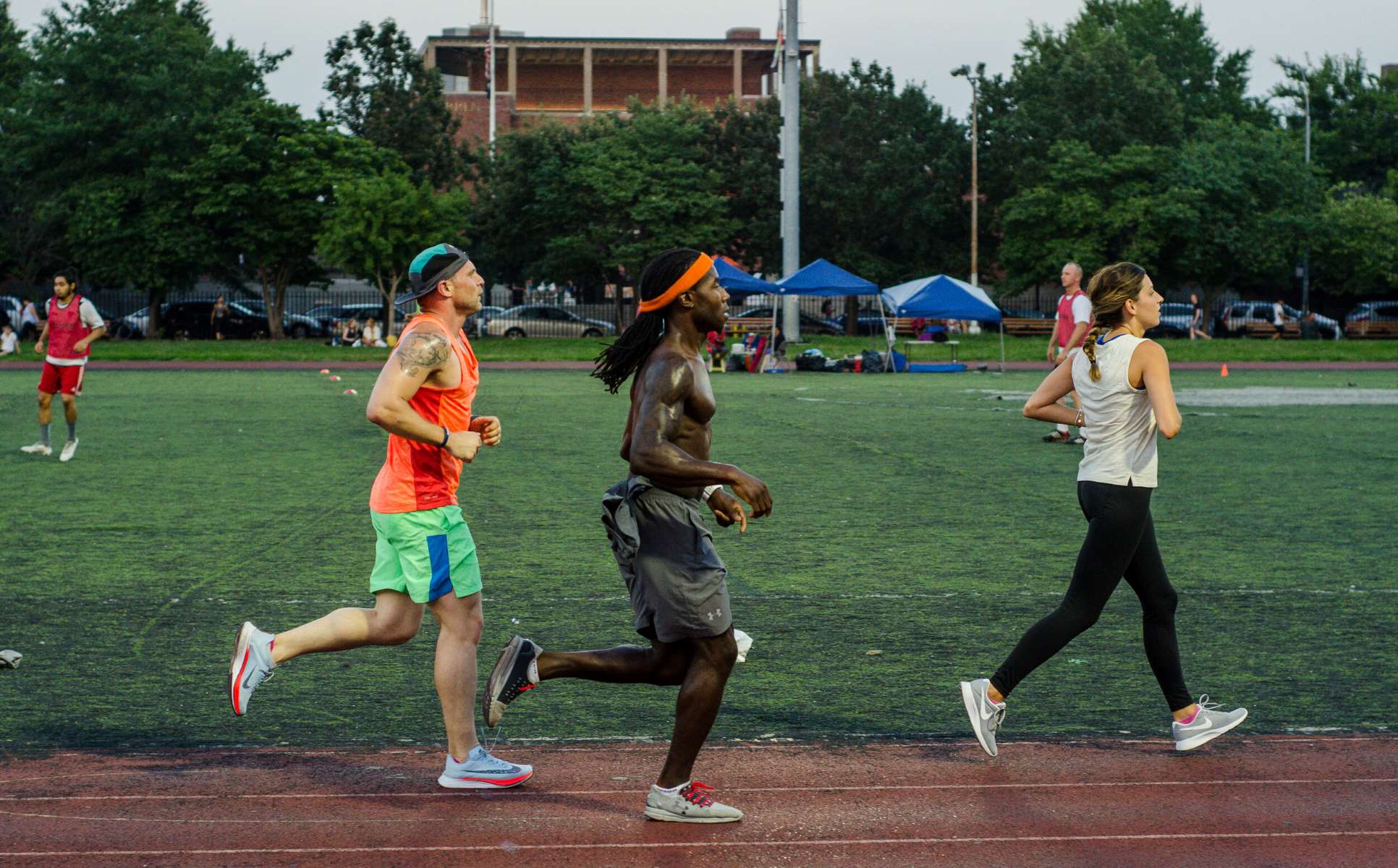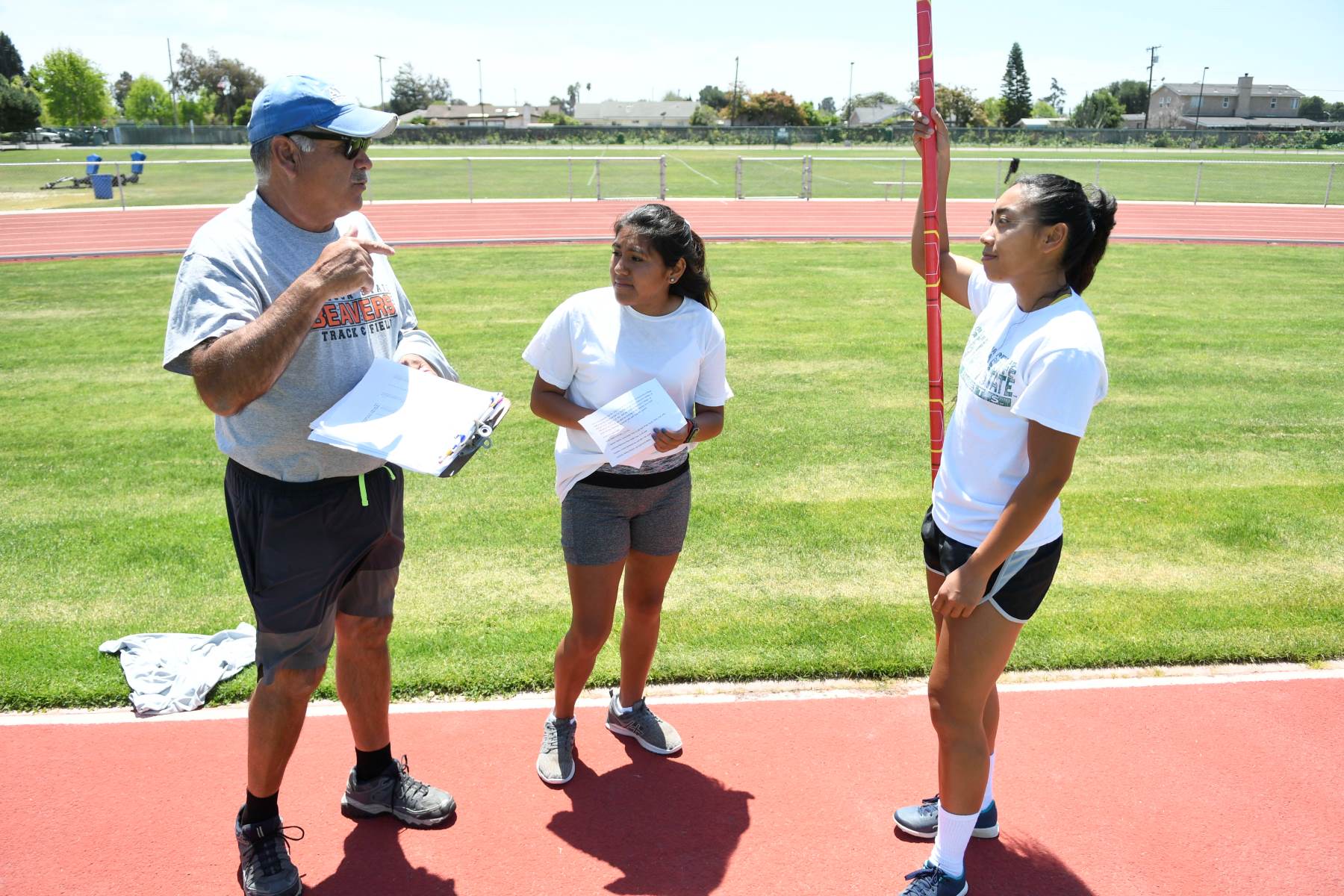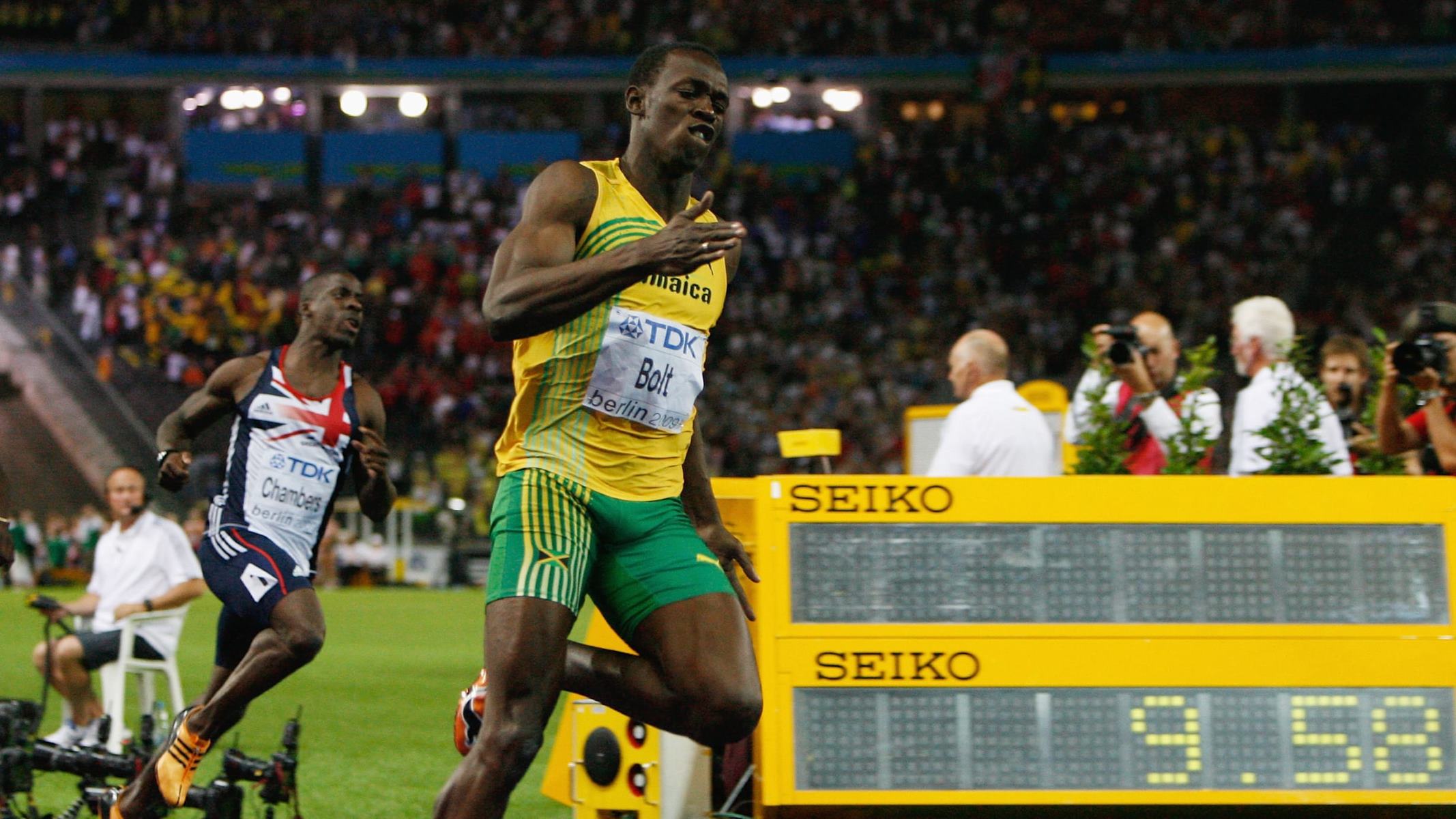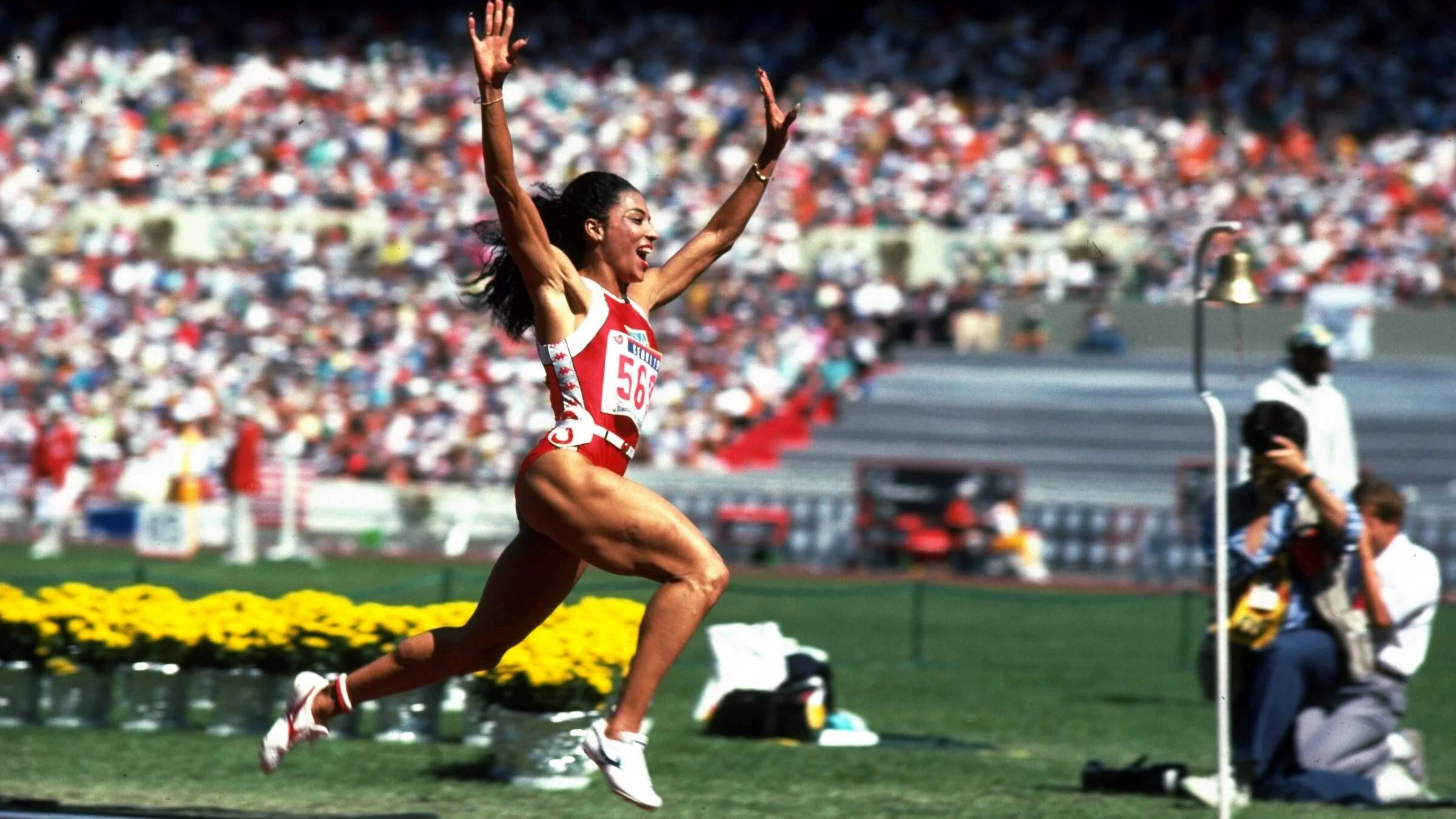

Featured
How To Train For Track And Field
Published: September 3, 2023
Discover effective training techniques and tips to improve your track and field performance. Get featured in the top ranks with our expert guidance.
Introduction
Track and field is a thrilling and demanding sport that combines speed, strength, endurance, and agility. Whether you’re a seasoned athlete or a beginner looking to get involved, training plays a crucial role in maximizing your potential and achieving success in track and field.
Training for track and field is not just about physical preparation; it also involves mental fortitude, goal-setting, and proper nutrition. This comprehensive training regimen allows athletes to develop their skills, improve their performance, and reduce the risk of injuries.
In this article, we will explore the key components of training for track and field, including understanding the different disciplines, setting clear goals, designing a well-rounded training program, warm-up and cool-down exercises, specific training drills for sprinting, endurance training, plyometric exercises for explosive power, strength training, flexibility and mobility exercises, injury prevention strategies, mental preparation, nutrition and hydration, and the importance of rest and recovery.
Whether you are a sprinter, long-distance runner, jumper, or thrower, this article will provide you with valuable insights and practical tips to optimize your training routine and improve your performance in track and field.
So, lace up your shoes, get ready to push past your limits, and let’s dive into the world of track and field training!
Importance of Training for Track and Field
Training is a fundamental aspect of track and field that can make all the difference in an athlete’s performance. It plays a pivotal role in improving speed, strength, endurance, technique, and overall athletic ability. Here are some key reasons why training is essential in track and field:
- Performance Enhancement: Training allows athletes to enhance their performance by developing specific skills and techniques required for their discipline. Whether it’s sprinting, jumping, throwing, or running long distances, consistent training helps athletes refine their form, increase speed, and improve their overall efficiency.
- Physical Conditioning: Track and field involve rigorous physical demands, and training helps athletes develop the necessary strength, power, and endurance to meet these demands. It enhances cardiovascular fitness, muscle strength, flexibility, and coordination, creating a solid foundation for optimal athletic performance.
- Injury Prevention: Training not only strengthens the muscles, but it also helps improve joint stability and flexibility, reducing the risk of injuries. By incorporating specific exercises and techniques into their training routine, track and field athletes can minimize the chances of common injuries such as sprains, strains, and overuse injuries.
- Mental Preparation: Track and field is not only a physical sport but also a mental one. Proper training helps athletes build mental resilience, focus, and confidence. It teaches them to overcome challenges, stay motivated, and maintain a competitive mindset, all of which are crucial for success in track and field.
- Goal Attainment: Training provides a structured approach to track and field, enabling athletes to set clear goals and work towards achieving them. It helps athletes track their progress, identify areas for improvement, and make necessary adjustments to their training plan. By setting realistic and measurable goals, athletes can stay motivated and continue to strive for excellence.
Overall, training is vital in track and field as it enhances performance, reduces the risk of injuries, builds mental fortitude, and helps athletes reach their full potential. Whether you’re a competitive athlete or simply enjoy participating in track and field, incorporating a well-rounded training program is key to success in this exhilarating sport.
Understanding the Different Track and Field Disciplines
Track and field is a diverse sport that encompasses various disciplines, each with its own unique set of skills, techniques, and challenges. Understanding these disciplines is crucial for athletes to identify their strengths and choose the events that align with their abilities. Let’s delve into the key track and field disciplines:
- Sprints: Sprinting events are all about speed and explosiveness. Athletes compete in races ranging from 100 meters to 400 meters, showcasing their ability to generate maximum power in a short amount of time.
- Hurdles: Hurdles events combine speed, agility, and precision. Athletes sprint down the track, jumping over a series of hurdles at fixed distances, with the goal of crossing the finish line in the shortest time possible.
- Middle-Distance and Long-Distance Running: These events, ranging from 800 meters to marathon distances, require a balance of speed and endurance. Athletes must maintain a steady pace over extended distances, relying on strategic pacing and mental toughness to excel.
- Jumps: Jumping events consist of various disciplines, including the long jump, high jump, triple jump, and pole vault. Athletes in these events focus on generating explosive power, precise takeoff, and proper techniques to achieve maximum distance or height.
- Throws: Throwing events involve shot put, discus, javelin, and hammer throw. Athletes showcase their strength, technique, and explosive power to propel the implements as far as possible, aiming for maximal distance or accuracy.
- Combined Events: Also known as multi-events or decathlon/heptathlon, these events test athletes’ versatility across multiple disciplines. Athletes compete in a combination of sprints, jumps, throws, and middle-distance events, accumulating points based on their performance in each discipline.
Each track and field discipline requires specific skills, training techniques, and physical attributes. It’s important for athletes to explore different disciplines, identify their strengths, and dedicate appropriate time and resources to mastering their chosen events. Coaches and trainers play a vital role in guiding athletes and providing specialized training programs for each discipline.
By understanding the various track and field disciplines, athletes can make informed decisions about the events they want to specialize in and tailor their training programs accordingly. Whether you prefer the explosiveness of sprints, the endurance of long-distance running, the technique of jumps, or the power of throws, there is a track and field discipline suited to your abilities and athletic aspirations.
Setting Clear Goals for Track and Field Training
Setting clear, specific, and achievable goals is essential for effective track and field training. Goals provide direction, motivation, and a benchmark for progress. When setting goals for track and field training, consider the following:
- Identify Your Purpose: Determine why you are participating in track and field. Are you competing at a recreational level, aiming for personal improvement, or pursuing competitive success? Understanding your purpose will help shape your goals and the level of commitment required.
- Be Specific: Rather than setting generic goals like “improve performance,” be specific about what you want to achieve. For example, you might set a goal to improve your 100-meter sprint time by half a second or increase your long jump distance by a meter.
- Set Both Short-Term and Long-Term Goals: Short-term goals help track progress and maintain motivation, while long-term goals provide a bigger picture perspective. Break down long-term goals into smaller, achievable milestones to track your progress along the way.
- Make your Goals Realistic and Attainable: While it’s important to challenge yourself, setting unrealistic goals can lead to frustration and disappointment. Consider your current fitness level, technique, and training commitment when setting goals for track and field.
- Quantify Your Goals: Make your goals measurable. Instead of stating “improve endurance,” set a goal to run an extra lap without getting fatigued or extend your sprint speed by 0.5 seconds.
- Set Outcome Goals and Performance Goals: Outcome goals focus on the end result, such as winning a race or qualifying for a specific competition. Performance goals emphasize personal improvement, such as increasing your vertical jump height or reducing your 400-meter race time.
- Consider Timeframe: Set a reasonable timeframe for achieving your goals. This will help you stay focused and make necessary adjustments to your training as you progress.
- Write Down Your Goals: Putting your goals in writing solidifies your commitment and serves as a reminder of what you are working towards. Place your goals where you can see them regularly, such as in your training journal or on a vision board.
Regularly review and reassess your goals throughout your track and field training journey. As you reach your goals, celebrate your achievements and set new goals to continue pushing yourself and evolving as an athlete. Remember, goal-setting in track and field is a dynamic process that adapts as you grow and progress in the sport.
Designing a Well-rounded Training Program
A well-rounded training program is essential for track and field athletes to optimize their performance, minimize the risk of injuries, and ensure overall athletic development. Here are some key considerations when designing your training program:
- Assess Your Current Fitness Level: Begin by assessing your current fitness level and identifying areas that need improvement. This assessment will help you create a baseline and set realistic training goals.
- Include a Variety of Training Methods: Incorporate a mix of training methods to target different aspects of fitness, such as aerobic conditioning, strength, speed, agility, and flexibility. This variation not only keeps training engaging but also develops a well-rounded athlete.
- Plan for Periodization: Implement periodization in your training program by dividing it into distinct phases. This includes building a foundation, developing specific skills, competition preparation, and recovery. Periodization helps avoid overtraining, optimizes performance, and ensures peak performance during competitions.
- Include Specific Training for Your Discipline: Each track and field event requires specific training techniques. Include exercises and drills that mimic the demands of your discipline, such as sprinting intervals for sprinters or long-distance runs for distance runners.
- Address Strength and Conditioning: Strength training is crucial for track and field athletes to improve power, muscle endurance, and injury prevention. Incorporate resistance training exercises using free weights, machines, or bodyweight to target major muscle groups. Additionally, include functional exercises that simulate movements specific to your events.
- Focus on Speed and Agility: Incorporate speed and agility training to enhance your ability to accelerate, change direction, and react quickly. This can include sprint drills, ladder exercises, cone drills, and plyometric training.
- Include Flexibility and Mobility Exercises: Flexibility and mobility are vital for injury prevention and optimal performance. Incorporate dynamic stretching, static stretching, and mobility exercises to improve range of motion and joint stability.
- Don’t Forget About Conditioning: Endurance training is important for track and field athletes, even for sprinters. Include cardiovascular exercises like running, cycling, or swimming to improve endurance and aerobic capacity.
- Allow for Rest and Recovery: Recovery is just as important as training. Schedule rest days in your training program to allow your body to recover and adapt to the physical stress. Incorporate techniques such as foam rolling, stretching, and proper nutrition to aid in recovery.
- Listen to Your Body: It’s essential to listen to your body and adjust your training program accordingly. If you’re experiencing any pain or discomfort, modify or seek guidance from a coach or healthcare professional.
Remember, designing a well-rounded training program requires personalization based on your objectives, individual needs, and available time and resources. It’s important to continuously evaluate and adjust your program as you progress, ensuring that it remains challenging, effective, and aligned with your goals.
Warm-up and Cool-down Exercises for Track and Field
Proper warm-up and cool-down routines are crucial in track and field to prepare the body for intense activity and promote recovery afterward. Incorporating these exercises into your training regimen can improve performance, prevent injuries, and enhance overall well-being. Here’s a breakdown of the warm-up and cool-down exercises to include:
Warm-up Exercises:
Before diving into intense activity, it’s important to gradually increase your heart rate, loosen up muscles, and activate key muscle groups. A proper warm-up routine typically includes the following:
- Cardiovascular Exercise: Start with light aerobic exercises such as jogging, cycling, or brisk walking for 5-10 minutes. This increases blood flow and gradually raises body temperature.
- Dynamic Stretching: Perform a series of dynamic stretching exercises that mimic the movements you’ll be doing during your workout or event. This can include leg swings, arm circles, lunges, and high knees. Focus on warming up specific muscle groups used in your discipline.
- Activation Exercises: Perform exercises that activate and engage specific muscle groups. For example, glute bridges, bodyweight squats, and push-ups can help activate the glutes, quadriceps, and upper body muscles.
- Drills and Strides: Include sport-specific drills and strides to improve running mechanics, increase agility, and promote muscle activation. These can include A-skips, B-skips, high knees, and bounding exercises.
Cool-down Exercises:
After completing your intense workout or event, it’s important to gradually reduce your heart rate, promote circulation, and aid in recovery. The cool-down routine should include the following:
- Light Cardiovascular Exercise: Incorporate low-intensity cardio exercises such as walking or light jogging for 5-10 minutes. This helps slowly lower your heart rate and promote blood flow to aid in the removal of waste products from the muscles.
- Static Stretching: Perform static stretches that target major muscle groups used in your training or event. Hold each stretch for 20-30 seconds and focus on breathing deeply to promote relaxation and flexibility.
- Foam Rolling: Use a foam roller or massage roller to target tight or sore muscles. Spend extra time on areas that require attention, applying gentle pressure and rolling back and forth to release tension and promote muscle recovery.
- Rehydrate and Refuel: Immediately after your cool-down, replenish fluids by drinking water or a sports drink to rehydrate. Consume a balanced post-workout meal or snack that includes carbohydrates and protein to support muscle recovery and replenish energy stores.
Remember, warm-up and cool-down exercises are essential for injury prevention and optimal performance in track and field. Build these routines into your training sessions to ensure that your body is properly prepared before exertion and able to recover effectively afterward.
Specific Training Drills for Sprinting
Sprinting requires explosive power, speed, and proper running technique. Incorporating specific training drills into your track and field routine can help improve your sprinting performance and enhance overall athleticism. Here are some key training drills to consider:
- Acceleration Drills: These drills focus on quick acceleration from a standing start. They include exercises such as standing starts, block starts, or resisted sprints using a sled or resistance bands. These drills build strength and power in the initial stages of a sprint.
- Max Velocity Drills: Max velocity drills help athletes achieve and maintain top speed. Examples of these drills include flying sprints, where athletes reach a maximum speed before starting the timed sprint, or overspeed training using assistance from a downhill or bungee cord. These drills improve running mechanics and help athletes increase their top-end speed.
- Technique Drills: Technique drills focus on refining proper sprinting mechanics. These drills include high knees, butt kicks, A-skips, B-skips, and strides. They help improve stride length, frequency, and hip flexor mobility, leading to more efficient running technique.
- Plyometric Drills: Plyometric exercises enhance explosive power and leg strength. Examples include bounding, depth jumps, squat jumps, and box jumps. These drills increase muscle power and improve the force production necessary for sprinting.
- Hill Sprints: Running uphill provides natural resistance that targets the glutes, hamstrings, and hip flexors, which are essential for powerful strides. Hill sprints also improve strength and promote good running mechanics under resistance, leading to enhanced sprinting speed.
- Interval Training: Incorporate interval training into your sprint workouts. This involves alternating between intense sprints and recovery periods. For example, perform a 100-meter sprint followed by a 2-minute recovery jog, and repeat for multiple sets. Interval training improves aerobic and anaerobic capacity, enabling athletes to sustain high-intensity efforts for longer periods.
It’s important to note that proper form and technique are crucial in sprinting. Focus on maintaining an upright posture, driving the knee forward, landing midfoot, and maximizing arm swing. Incorporate video analysis or work with a coach to ensure that you are executing the drills with correct sprinting mechanics.
When integrating these drills into your training program, start with a proper warm-up to prepare the body for the explosive demands of sprinting. Gradually increase the intensity and volume of the drills over time, allowing for adequate rest and recovery between sessions to prevent overtraining and reduce the risk of injury.
By incorporating specific training drills for sprinting into your track and field routine, you can improve your speed, power, running technique, and overall performance as a sprinter.
Endurance Training for Track and Field
Endurance is a critical component of track and field, even for sprinters and jumpers. Developing a robust aerobic base and improving your endurance capacity can enhance your performance, delay fatigue, and help you maintain a consistent pace throughout your event or training session. Here are key elements to consider when incorporating endurance training into your track and field routine:
- Long-Distance Runs: Incorporate regular long-distance runs to develop cardiovascular endurance. Start with an achievable distance and gradually increase it over time. These runs improve aerobic capacity, enhance muscle endurance, and strengthen the cardiovascular system.
- Interval Training: Interval training combines high-intensity efforts with timed recovery periods. For example, perform a set of 400-meter sprints at a high intensity, followed by a recovery jog, and repeat for multiple sets. This type of training improves anaerobic fitness, increases lactate threshold, and enhances the body’s ability to sustain high-intensity efforts.
- Tempo Runs: Tempo runs involve running at a comfortably challenging pace for a sustained period. This helps improve lactate threshold, which is the point at which lactic acid starts accumulating in the muscles. By raising this threshold, athletes can sustain higher intensities for longer periods before fatigue sets in.
- Fartlek Training: Fartlek training combines continuous running with varying speeds and intensities. It involves alternating between periods of high-intensity efforts and recovery. This training method helps improve aerobic and anaerobic fitness, enhances speed, and promotes mental resilience.
- Cross-Training: Incorporate cross-training activities such as cycling, swimming, or using an elliptical machine to vary your training routine and reduce the risk of overuse injuries. These activities can help improve cardiovascular fitness while giving your legs a break from the impact of running.
- Hill Training: Running uphill challenges the cardiovascular system and strengthens the lower body muscles. Incorporate hill repeats into your training, focusing on maintaining a consistent effort while running uphill. This type of training helps build strength, power, and improves running economy.
- Recovery Runs: Schedule recovery runs between intense training sessions or competitions. These runs are done at an easy, comfortable pace to aid in recovery, promote blood flow, and flush out metabolic waste products.
Remember, endurance training should be progressive and tailored to your individual needs and event requirements. Gradually increase the duration, intensity, and frequency of your endurance workouts, allowing for adequate rest and recovery to avoid overtraining.
Incorporating endurance training for track and field not only improves your ability to sustain effort but also supports your overall athletic performance. By developing a strong endurance base, you can push your limits, maintain speed, and achieve consistent results in your chosen discipline.
Plyometric Exercises for Explosive Power
Plyometric exercises are an essential component of track and field training, as they help develop explosive power, speed, and agility. By incorporating plyometric exercises into your routine, you can improve your athletic performance and achieve better results in sprinting, jumping, and throwing events. Here are some key plyometric exercises to consider:
- Box Jumps: Begin by standing in front of a box or platform. Jump onto the box and land with both feet, then step down or jump back down to the starting position. Box jumps improve lower-body power, strengthen the glutes and quadriceps, and enhance vertical jumping ability.
- Bounding: Bounding involves exaggerated running strides with an explosive push-off and an exaggerated knee drive. Leap forward while driving your opposite arm forward. Bounding helps improve sprinting speed, stride length, and overall lower-body power.
- Depth Jumps: Stand on a box or platform and step off, then immediately explode back up into a vertical jump as soon as you hit the ground. Depth jumps improve reactive strength, which is vital for explosive movements like sprinting and jumping.
- Squat Jumps: Begin in a squat position and explode vertically by extending your hips, knees, and ankles simultaneously. Land softly and go back into the squat position. Squat jumps develop lower-body power and improve explosive movements.
- Lateral Bounds: Stand with feet shoulder-width apart and jump laterally as far as you can, landing softly on the opposite leg. Repeat on both sides. Lateral bounds improve lateral explosiveness, agility, and strengthen the muscles involved in side-to-side movements.
- Medicine Ball Throws: Perform explosive movements like overhead medicine ball throws or chest passes against a wall. This exercise enhances upper-body power, core stability, and throwing ability in field events like shot put or discus.
- Single-Leg Hops: Stand on one leg and hop forward or laterally, landing softly on the same leg. This exercise develops single-leg power, stability, and proprioception. It is particularly beneficial for jumpers and hurdlers.
When incorporating plyometric exercises into your track and field training, remember to start with proper technique and gradually progress in intensity and difficulty. Perform these exercises on a suitable surface, such as a track or a soft, level area, and use suitable footwear to provide adequate support and cushioning.
It’s essential to warm up thoroughly before performing plyometric exercises to prepare your muscles and joints for the explosive movements. Maintain proper form throughout each exercise, focus on quality rather than quantity, and allow for adequate rest and recovery between sets and sessions.
Incorporating plyometric exercises into your track and field training regimen will help develop explosive power, improve speed, agility, and enhance overall athletic performance. By training your muscles to generate maximum force in minimal time, you can achieve greater success in sprinting, jumping, and throwing events.
Strength Training for Track and Field Athletes
Strength training is a crucial component of track and field preparation, helping athletes improve power, speed, endurance, and overall athletic performance. Incorporating specific strength exercises into your training routine can enhance muscle strength, joint stability, and reduce the risk of injuries. Here are some key considerations for strength training:
- Compound Exercises: Focus on compound exercises that engage multiple muscle groups simultaneously. Squats, deadlifts, lunges, bench press, and pull-ups are great examples. These exercises improve overall muscle strength, coordination, and functional movement.
- Progressive Overload: Gradually increase the weight, resistance, or intensity of your strength training exercises over time. This progressive overload principle ensures that your muscles continue to adapt and improve.
- Core Strengthening: A strong core is essential for stability, balance, and efficient movement. Incorporate exercises such as planks, Russian twists, medicine ball throws, and hanging leg raises to strengthen your core muscles.
- Single-Leg Exercises: Include exercises that focus on single-leg strength, such as Bulgarian split squats, single-leg deadlifts, or step-ups. Training each leg independently helps identify and correct imbalances while improving stability and power.
- Plyometric Training: Combining plyometric exercises with strength training helps develop explosive power. Box jumps, depth jumps, and medicine ball throws are excellent plyometric exercises that enhance fast-twitch muscle fibers and maximize power output.
- Balance and Stability Exercises: Incorporate exercises that challenge balance and stability, such as single-leg balances, bosu ball exercises, or stability ball exercises. Improving balance and stability can enhance overall body control and help prevent injuries.
- Specific Event Training: Tailor your strength training to the specific demands of your track and field event. For example, sprinters may focus more on explosive power and leg strength, while throwers may prioritize upper body and core strength.
- Rest and Recovery: Allow for adequate rest and recovery between strength training sessions. Muscles grow and strengthen during the recovery phase, so it’s essential to give your body sufficient time to repair and adapt to the training stimulus.
- Seek Professional Guidance: If you’re new to strength training or unsure about proper form and technique, consult a qualified strength and conditioning coach or trainer. They can create a customized program tailored to your needs, teach you proper exercise technique, and ensure safe and effective training.
Remember, strength training is a supplemental component to track and field training. It should complement your sport-specific training and not overshadow it. Incorporating well-designed strength training into your routine will help you develop the necessary strength and power to excel in your chosen track and field events.
Flexibility and Mobility Exercises for Track and Field
Flexibility and mobility are essential components of track and field training as they improve performance, prevent injuries, and enhance overall movement efficiency. Incorporating regular flexibility and mobility exercises into your routine can help optimize your range of motion, joint stability, and muscle balance. Here are some key exercises to consider:
- Dynamic Stretching: Perform dynamic stretching exercises before your workouts or training sessions. These movements involve controlled, repetitive motions that gently stretch and activate muscles and joints. Examples include leg swings, arm circles, and walking lunges with a twist.
- Static Stretching: After your workouts or training sessions, include static stretching exercises to lengthen and relax muscles. Hold each stretch for 20-30 seconds without bouncing. Focus on major muscle groups such as hamstrings, quads, calves, and shoulders.
- Foam Rolling: Incorporate foam rolling or self-myofascial release techniques to release muscle tension and improve mobility. Roll along muscles and trigger points, applying gentle pressure to alleviate tightness. Focus on areas such as calves, quads, hamstrings, and glutes.
- Hip Mobility Exercises: The hips play a significant role in track and field events. Include exercises like hip circles, hip flexor stretches, and pigeon pose to improve hip flexibility and mobility. This can enhance running stride, jumping ability, and throwing mechanics.
- Thoracic Mobility Exercises: Track and field athletes need good mobility in the thoracic spine (upper back) for proper arm swing and posture. Exercises like thoracic rotations, cat-camel stretches, and foam roller extensions can improve mobility in this area.
- Ankle Mobility Exercises: Ankle mobility is essential for sprinting and jumping events. Perform ankle circles, calf raises, and heel-to-toe walks to enhance ankle flexibility and stability. This improves your ability to generate power and maintain proper form.
- Shoulder Mobility Exercises: Proper shoulder mobility is crucial for throwing events and optimal arm swing during running. Include exercises like wall slides, shoulder dislocations with a band or broomstick, and arm circles to improve shoulder range of motion.
- Yoga or Pilates: Incorporate regular yoga or Pilates sessions to improve overall flexibility, strength, and body awareness. These disciplines focus on controlled movements, deep stretching, and core strength, leading to enhanced mobility and function.
Remember, flexibility and mobility exercises should be performed regularly and consistently. Aim to spend at least 10-15 minutes each day to enhance your flexibility and mobility. Listen to your body, be gentle, and avoid pushing past your limits to prevent injury.
Incorporating flexibility and mobility exercises into your track and field training routine will improve your range of motion, joint stability, and overall movement efficiency. By maintaining optimal flexibility and mobility, you can maximize your performance potential and reduce the risk of injuries.
Injury Prevention Strategies for Track and Field Training
Injury prevention is a vital aspect of track and field training. By incorporating effective strategies into your routine, you can minimize the risk of injuries, keep your body healthy, and maintain consistent progress. Here are some key strategies to consider:
- Gradual Progression: Avoid sudden increases in training volume or intensity. Gradually progress your workouts, allowing your body to adapt and recover between sessions. This helps prevent overuse injuries and reduces the risk of muscular imbalances.
- Proper Warm-up and Cool-down: Always begin your workouts with a thorough warm-up to increase blood flow, prepare your muscles, and improve joint mobility. Likewise, finish each session with a cool-down and stretching routine to aid in recovery and promote muscle relaxation.
- Strength and Conditioning: Incorporate regular strength and conditioning exercises to strengthen muscles, bones, and connective tissues. Building a strong foundation reduces the risk of imbalances and improves overall stability and injury resistance.
- Correct Technique and Form: Learn and practice proper technique for your specific track and field events. Seek instruction from coaches or experienced athletes to ensure that you are performing exercises and movement patterns correctly. Proper form minimizes the risk of strains, sprains, and other injuries.
- Listen to Your Body: Pay attention to any signs of pain or discomfort. If you experience persistent pain or injury symptoms, modify or stop the activity and seek professional advice from a healthcare provider or sports medicine specialist.
- Rest and Recovery: Allow for adequate rest and recovery between training sessions. This allows your body to repair and rebuild stronger muscles and tissues. Neglecting rest can lead to overtraining, fatigue, and increased susceptibility to injuries.
- Proper Nutrition and Hydration: Maintain a balanced diet that includes a variety of nutrient-dense foods. Stay adequately hydrated before, during, and after training sessions or competitions to support optimal performance and recovery.
- Appropriate Footwear: Wear proper footwear that provides support, cushioning, and adequate traction for your specific events. Ill-fitting or worn-out shoes can lead to foot and ankle injuries, so it’s important to invest in quality footwear and replace them when necessary.
- Cross-Training: Incorporate cross-training activities to vary your training routine and reduce the risk of overuse injuries. Engaging in activities like swimming, cycling, or yoga can provide additional benefits, such as improved cardiovascular fitness, flexibility, and recovery.
- Professional Guidance: Work with qualified coaches, trainers, or sports medicine professionals who can design a training program tailored to your individual needs and help prevent injuries. They can provide guidance on technique, strength training, and injury prevention strategies specific to your track and field events.
Remember, injury prevention is a proactive approach that requires consistency, attention to detail, and a balanced approach to training. By incorporating these strategies, you can maintain a healthy and injury-free track and field training journey.
Mental Preparation and Focus for Track and Field
Mental preparation and focus play a significant role in track and field performance. A strong mental game can help athletes overcome challenges, maintain confidence, and achieve optimal results. Here are key strategies to enhance mental preparation for track and field:
- Goal Setting: Set clear and measurable goals for your track and field endeavors. Define both short-term and long-term objectives to provide a sense of direction and motivation. Goals serve as a constant reminder of what you are working towards and help maintain focus.
- Visualize Success: Use visualization techniques to mentally rehearse your events. Visualize yourself executing perfect techniques, achieving your goals, and performing at your best. This mental imagery reinforces positive outcomes, builds confidence, and enhances performance.
- Positive Self-Talk: Replace negative thoughts and self-doubt with positive and empowering self-talk. Encourage yourself, focus on your strengths, and maintain a belief in your abilities. Positive self-talk boosts confidence and helps manage stress and anxiety.
- Stay Present: Practice staying in the present moment during training and competitions. Avoid dwelling on past performances or worrying about future outcomes. Focus on the tasks at hand and give your full attention to each moment to optimize performance.
- Develop a Routine: Establish pre-event routines to help you mentally prepare and get into the right mindset. This can include specific warm-up exercises, visualization techniques, and mental cues that trigger focus and determination.
- Manage Pressure: Learn techniques to control nerves and handle pressure situations effectively. This can include deep breathing exercises, meditation, or visualization-based relaxation techniques. Managing pressure allows you to perform at your best when it matters most.
- Embrace Challenges: Embrace challenges as opportunities for growth rather than fearing them. View setbacks as valuable learning experiences and adjust your mindset to see them as stepping stones towards improvement.
- Develop Resilience: Cultivate mental resilience to bounce back from setbacks and stay motivated in the face of adversity. Embrace a growth mindset and develop a strong belief in your ability to overcome obstacles and achieve your goals.
- Seek Support: Surround yourself with a supportive network of coaches, teammates, and mentors who can provide guidance, encouragement, and perspective. Share experiences, seek advice, and learn from others who have faced similar challenges.
- Enjoy the Process: Find joy and satisfaction in the journey of track and field. Celebrate small victories along the way and appreciate the effort, dedication, and progress you make. A positive and enjoyable mindset contributes to long-term success.
Remember, mental preparation is just as important as physical training in track and field. By incorporating these strategies into your routine, you can optimize your mental game, develop resilience, and perform at your best when it matters most.
Nutrition and Hydration for Track and Field Athletes
Nutrition and hydration are critical factors that influence performance and recovery in track and field. Proper fueling and hydration strategies can enhance energy levels, optimize training adaptations, and support overall health. Here are key considerations for nutrition and hydration:
- Macronutrient Balance: Maintain a balanced diet that includes carbohydrates, proteins, and healthy fats. Carbohydrates provide the primary fuel source for high-intensity activities, while proteins aid in muscle repair and recovery. Healthy fats support overall health and provide sustained energy.
- Pre-Event Nutrition: Consume a well-balanced meal containing carbohydrates, proteins, and a small amount of fat 2-3 hours before training or competition. This allows time for digestion and provides a steady release of energy during exercise.
- During-Event Fueling: For longer events or intense training sessions lasting more than an hour, consider consuming easily digestible carbohydrates such as sports drinks, gels, or energy bars to maintain blood sugar levels and delay fatigue.
- Post-Event Recovery: Refuel with a combination of carbohydrates and protein within 30-60 minutes after training or competition to replenish glycogen stores and promote muscle recovery. Include sources such as fruits, whole grains, lean meats, or dairy products.
- Hydration: Proper hydration is crucial during training and competition. Drink fluids regularly throughout the day and monitor urine color for hydration status. During exercise, aim to drink water or sports drinks to replace fluids lost through sweat.
- Electrolyte Balance: Electrolytes like sodium, potassium, and magnesium are vital for maintaining fluid balance and optimal muscle function. Consider consuming electrolyte-rich foods or sports drinks during prolonged or intense exercise.
- Individual Needs: Identify your specific nutritional needs by consulting with a registered dietitian or sports nutritionist. They can provide personalized recommendations based on your training volume, intensity, body composition, and specific goals.
- Weight Management: Maintain a healthy weight range that supports optimal performance and overall health. Seek guidance from a professional if you need assistance with weight management strategies, such as proper nutrition and body composition assessment.
- Sleep and Recovery: Prioritize adequate sleep to support optimal recovery and overall wellness. Aim for 7-9 hours of quality sleep each night to enhance physical and mental performance.
- Supplementation: Focus on meeting your nutritional needs through a well-balanced diet. However, if specific nutrient deficiencies are identified or recommended by a healthcare professional, targeted supplementation may be considered.
Remember, proper nutrition and hydration strategies are individualized and may vary depending on factors such as training intensity, duration, environmental conditions, and personal preferences. Experiment with different strategies during training to identify what works best for you and consult with professionals to optimize your nutrition and hydration plan.
Rest and Recovery for Track and Field Athletes
Rest and recovery are crucial components of track and field training as they allow the body to repair, adapt, and maximize performance gains. Proper rest and recovery strategies are essential for preventing injuries, optimizing training adaptations, and maintaining overall well-being. Here are key considerations for rest and recovery:
- Rest Days: Schedule regular rest days throughout your training week. Rest days allow your body to recover from the physical and mental stress of training. Use this time to relax, engage in low-impact activities, and allow your muscles and joints to recuperate.
- Sleep: Prioritize quality sleep as it plays a critical role in recovery and overall athletic performance. Aim for 7-9 hours of uninterrupted sleep each night to support physical and mental rejuvenation.
- Active Recovery: Engage in light, low-impact activities on rest days or after intense training sessions. Gentle exercises like walking, swimming, yoga, or foam rolling can promote blood flow, reduce muscle soreness, and aid in recovery.
- Nutrition: Consume a well-balanced diet that includes adequate macronutrients and micronutrients to support recovery and replenish energy stores. Focus on consuming quality protein, carbohydrates, and healthy fats to provide essential nutrients for tissue repair and glycogen replenishment.
- Hydration: Stay properly hydrated throughout the day to support optimal recovery. Adequate hydration aids in nutrient delivery, muscle function, and waste removal. Drink water regularly and consider sports drinks during intense or prolonged training sessions to replace electrolytes lost through sweat.
- Massage and Self-Care Techniques: Consider incorporating massage therapy or self-care techniques such as foam rolling, stretching, or using a massage gun to reduce muscle tension, alleviate trigger points, and improve flexibility. These techniques can enhance recovery and help prevent injuries.
- Stress Management: Find effective methods to manage stress, as excessive stress can impede recovery. Incorporate stress management techniques such as deep breathing exercises, meditation, or engaging in hobbies and activities that bring joy and relaxation.
- Periodization: Incorporate planned periods of reduced training intensity or volume into your training program. This allows for increased recovery, adaptation, and prevention of overtraining. Periodization helps optimize performance and prevents burnout.
- Listen to Your Body: Pay attention to your body’s signals and cues. If you experience persistent fatigue, soreness, or pain, adjust your training load and allow for additional rest. Pushing through excessive fatigue or pain can increase the risk of injuries and hinder progress.
- Professional Guidance: Seek advice from qualified coaches, trainers, or healthcare providers who can guide you in establishing an individualized rest and recovery plan. They can help monitor training load, assess your recovery needs, and provide specific recommendations based on your unique requirements.
Remember, rest and recovery should be integrated into your training plan as an essential part of optimizing performance. By prioritizing rest, sleep, nutrition, and self-care, you can support your body’s recovery processes, reduce the risk of injuries, and ultimately enhance your track and field performance.
Conclusion
Training for track and field involves a combination of physical preparation, mental focus, and strategic planning. By incorporating the key components discussed in this article, you can optimize your performance, reduce the risk of injuries, and achieve your goals in this dynamic sport.
Understanding the different track and field disciplines allows you to choose events that align with your strengths and abilities. Setting clear goals provides direction and motivation, while a well-rounded training program incorporates various methods to develop speed, strength, endurance, and flexibility.
Proper warm-up and cool-down exercises prepare your body for intense activity and aid in recovery. Specific training drills enhance your sprinting performance, explosive power, and technique. Endurance training builds cardiovascular fitness, while plyometric and strength exercises improve power and overall athletic prowess.
To excel in track and field, mental preparation and focus are crucial. Emphasize goal-setting, visualization, positive self-talk, and resilience to optimize your mental game. Proper nutrition and hydration support energy, performance, and recovery, while rest and recovery strategies allow your body to repair and adapt to training stress.
Incorporating injury prevention strategies, such as proper technique, gradual progression, and rest days, is key to staying healthy and consistent in your track and field journey. Finally, seeking professional guidance and listening to your body will help tailor your training program to your individual needs and goals.
Remember, track and field is not just a physical endeavor but also a mental and emotional challenge. By focusing on holistic development, you can unleash your full potential, achieve remarkable results, and truly excel in this exhilarating and rewarding sport.









